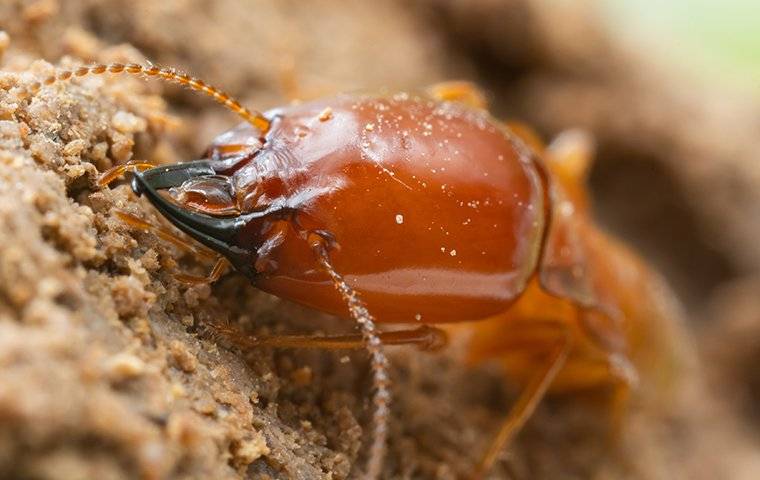Would you know if a beaver was eating your home? Most likely! These large woodland rodents leave large bite marks in the wood they consume and make their presence obvious. Termites, on the other hand, can do just as much damage but are much harder to identify. These tiny insects chew through structural wood quietly, leaving no trace of their presence — that is, until it's too late. To help you identify these pests inside your Merrimac home before it is too late, here are some signs to keep an eye out for.

Mud Tubes
When subterranean termites invade a home, they look for the safest way to get inside. For them, this means staying moist. If they can do this by crawling up foundations inside gaps and cracks, they will. If a home’s foundation is damage-free, these insects will build pencil-sized mud tubes to access the home. We recommend starting your inspection by looking for these muddy pathways around your home’s exterior.
Swarmers
Termites live in large colonies underground. These colonies constantly grow as long as there is a reliable source of cellulose, the main component found in wood, nearby to feed on. As nests of termites become mature, reproductive members produce swarmers. These flying wood-eaters are tasked with locating new areas to build and feed. Identify a termite swarmer by its white segmented body and long ovular wings that extend beyond its body.
Where you see swarmers says a lot about your home’s current risk. If they are outside looking in, it means your home is at risk of a near-future infestation. If you find them indoors in large numbers, then they most likely came inside through holes tunneled through your structural wood, indicating an already serious problem.
Visible Moisture Damage
Subterranean termites need a moist environment to survive. When tunneling their way through homes, these pests carry small amounts of water with them in order to make wood easier to harvest. This water often causes problems, sometimes visual, sometimes not. If you start to notice discoloration to your home’s walls, ceilings, and floors, notice wallpaper and paint starting to bubble, or find drywall sagging, you could have a termite infestation.
Structural Problems
Beyond discoloration and damaged paint, wallpaper, and drywall, termite-related moisture damage causes other, more subtle, damage around homes. This may include overly squeaky floorboards, tight-fitting doors and windows, weakened support beams, buckling floors, walls, and ceilings, and other severe problems.
How To Exclude Termites
If you have thoroughly inspected your home and find no obvious signs of a termite infestation, your next step should be to put in place some preventive measures. To help you with this, try these simple exclusion tips:
- Eliminate sources of water build-up in and around your home.
- Make sure your gutters and drains are working properly.
- Repair or replace structural wood around your home and outbuildings that are negatively affected by water damage, rot, or decay.
- Avoid using wood-based mulch in your lawn or garden.
- Fix leaky piping and fixtures inside your home.
- Use a dehumidifier indoors.
- Create a non-wood barrier between exterior soil and the wood of your home.
How To Know If Your Home Has Termites
Even with all of the signs we mentioned, it is still difficult to know for certain if a home has termites or not. To find out if your Merrimac property is dealing with a termite infestation, let the experts at Freedom Pest Control have a look. We will evaluate pest pressures and put in place a quick solution to get and keep these pests away. Call us today to learn more about our comprehensive termite control options in Massachusetts or New Hampshire, and schedule your home for a service visit.
Learn more about our home pest control and commercial pest control solutions.

